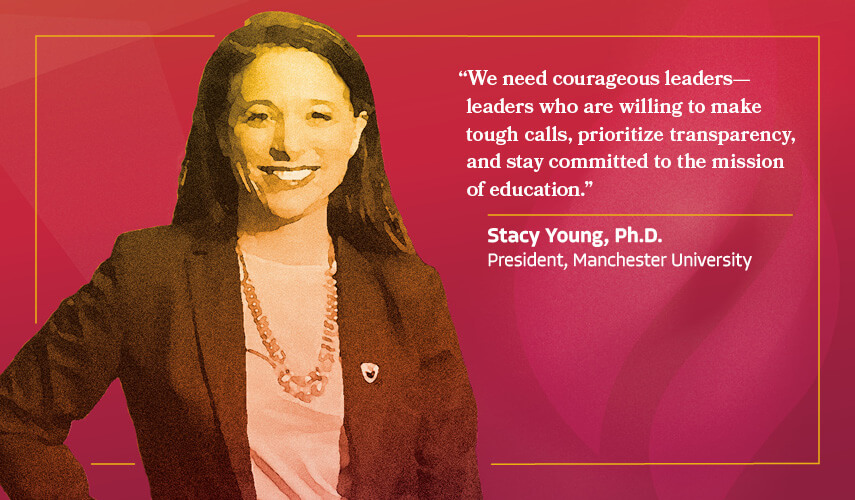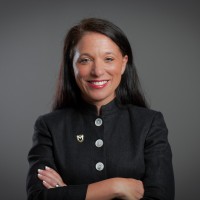
Courageous Leadership
The Power of Focus
As a university president, I’ve come to understand that difficult decisions are inevitable. Often, the problems that reach my desk are the ones that no one else has been able to solve. My role requires me to make choices that won’t always be popular. Yet, I’ve learned that leading with transparency and using data to guide decisions fosters understanding, even when those decisions are hard to accept.
From the moment I stepped into this role, I committed to sharing as much information as possible with faculty, staff, and students. Transparency, I believe, is one of the most important aspects of leadership. While I can’t always share every single detail behind a decision, I strive to explain the rationale using facts and data. This approach allows people to see the bigger picture and understand the constraints we face.
We need courageous leaders—leaders who are willing to make tough calls, prioritize transparency, and stay committed to the mission of education.

By Stacy Young, Ph.D.,
President
Manchester University (IN)
To reinforce this transparency, I’ve structured our leadership meetings to ensure ongoing dialogue. Our cabinet meets weekly, and we hold expanded cabinet meetings monthly to bring in additional voices. I also meet each month with faculty leadership, staff leadership, and sit in on most full faculty meetings. These touchpoints help to keep communication open and allow me to share updates while also listening to concerns. The challenge remains in engaging students in these conversations, but I continue to invite them into the conversation and seek ways to amplify their voices in decision-making processes.
Data-Driven Decision Making
Using data to guide decisions is crucial, particularly when navigating difficult financial realities. Recently, we had to evaluate which programs were sustainable given enrollment trends. This meant having tough conversations with faculty about the viability of certain courses and departments.
One such discussion involved a faculty member requesting an additional hire in their department. Instead of making a subjective decision, I laid out the numbers. I showed the department’s enrollment trends compared to another department that was experiencing significant growth and needed faculty support. By presenting the data objectively, I was able to demonstrate why our limited resources needed to be allocated elsewhere. While the conversation wasn’t easy, it helped foster understanding by shifting the focus from personal preference to institutional sustainability.
This same data-driven approach applies to financial decisions at the university level. Balancing financial sustainability with the institution’s mission requires prioritization. At Manchester, our strategic plan serves as our guide, ensuring that every decision aligns with our broader institutional goals.
The Strategic Plan as Our Guide
With so many external pressures in higher education—legislative changes, enrollment challenges, financial constraints—it’s easy to get caught up in reactive decision-making. But I’ve found that staying laser-focused on our strategic plan provides clarity amid chaos.
At Manchester, we don’t just have a strategic plan; we live it. It’s posted in every building, displayed in my office, and referenced in every major meeting. Every employee, from faculty to groundskeepers, knows how their work connects to it. When I send campus updates, I tie every point back to our strategic goals to reinforce their relevance.
One of the most important leadership lessons I’ve learned is that disruptions will always come. I experienced this firsthand when I first became a president in early 2020, just 74 days before the COVID-19 pandemic turned higher education upside down. The constant decision-making about safety, closures, and reopening was overwhelming. But at some point, I realized we couldn’t allow the crisis to consume all our time. We had to allocate space to address it while also continuing to move forward. That mindset is just as important today as we navigate legislative shifts and funding challenges. If we don’t remain focused on our mission and strategic goals, we risk stagnation.
Building a Culture of Resilience
Leadership isn’t just about making decisions—it’s also about fostering a culture where others feel empowered to lead with courage. At Manchester, I work to instill resilience in our faculty and staff by reinforcing our shared purpose: student success. Higher education is not a profession people choose for financial gain; we do this work because we believe in transforming lives. That passion must remain our guiding light.
Recently, as external challenges forced us to make tough decisions, we held listening sessions for faculty, staff, and students. This allowed space for the expression of concerns and comments from our stakeholders. These gatherings allow us to acknowledge the emotional weight of difficult decisions while also reinforcing our commitment to moving forward together.
Additionally, I emphasize the importance of self-care and teamwork. Leadership requires thick skin, and finding healthy outlets—whether it’s taking a walk, exercising, or leaning on a strong support network—is critical. I’ve also encouraged our cabinet and leadership team to show grace toward one another. We are all human, and some days will feel heavier than others. Creating a culture of mutual support makes the journey more sustainable.
Leading with Courage
For any leader hesitant to make tough decisions out of fear of backlash, my advice is this: surround yourself with a strong team, rely on data, and stay true to your strategic vision and mission. You can’t let external pressures dictate your leadership. Yes, there will be criticism. Yes, there will be moments of uncertainty. But courage means pushing forward anyway.
One of my biggest concerns for the future of higher education is who will step into leadership roles. The presidency is demanding, often thankless work, and the tenure of college presidents continues to shrink. But we need courageous leaders—leaders who are willing to make tough calls, prioritize transparency, and stay committed to the mission of education.
At the end of the day, my work is for the students. Seeing them thrive, hearing about their successes, and knowing that we are making a difference in their lives—that’s what makes the challenges worth it. And that is why I choose to lead with courage every single day.

